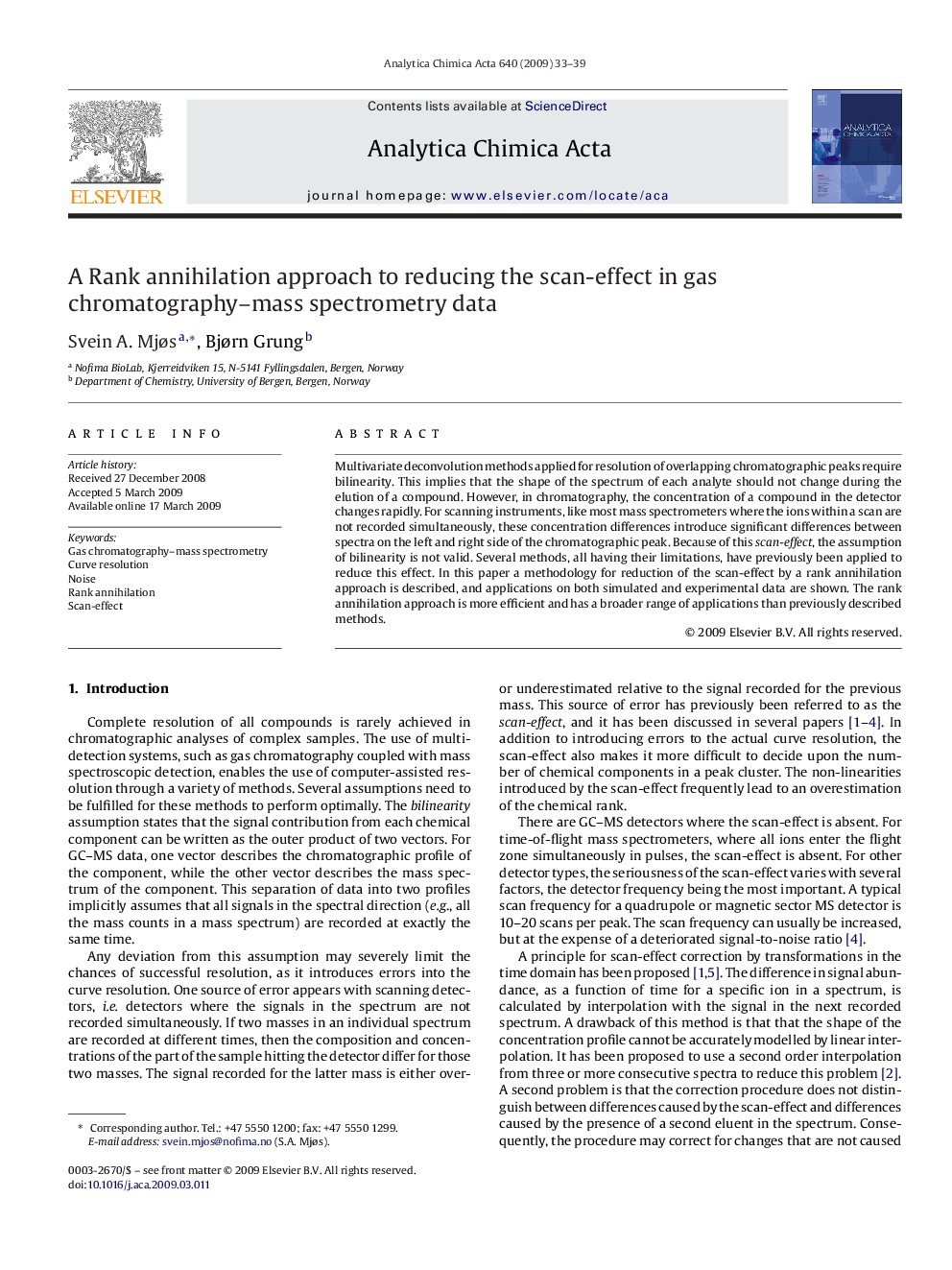| Article ID | Journal | Published Year | Pages | File Type |
|---|---|---|---|---|
| 1168044 | Analytica Chimica Acta | 2009 | 7 Pages |
Multivariate deconvolution methods applied for resolution of overlapping chromatographic peaks require bilinearity. This implies that the shape of the spectrum of each analyte should not change during the elution of a compound. However, in chromatography, the concentration of a compound in the detector changes rapidly. For scanning instruments, like most mass spectrometers where the ions within a scan are not recorded simultaneously, these concentration differences introduce significant differences between spectra on the left and right side of the chromatographic peak. Because of this scan-effect, the assumption of bilinearity is not valid. Several methods, all having their limitations, have previously been applied to reduce this effect. In this paper a methodology for reduction of the scan-effect by a rank annihilation approach is described, and applications on both simulated and experimental data are shown. The rank annihilation approach is more efficient and has a broader range of applications than previously described methods.
